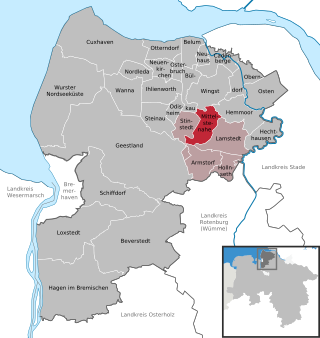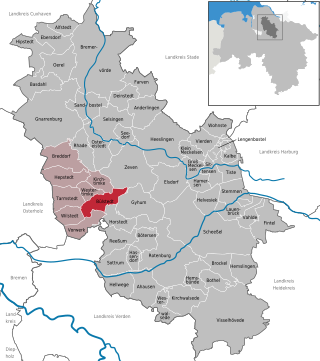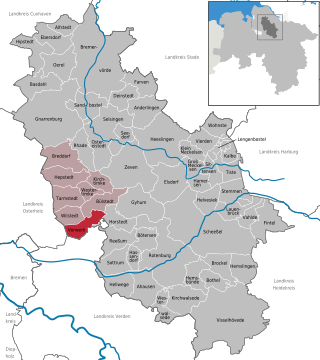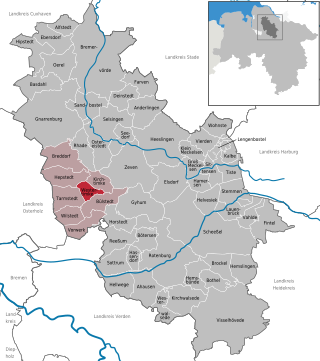Harsefeld Harsfeld | |
|---|---|
 View over the remnants of the former Archabbey towards the Lutheran church St.Marien und Bartholomäi | |
Location of Harsefeld within Stade district 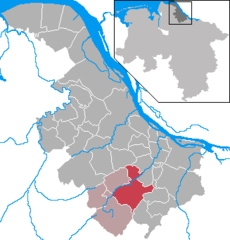 | |
| Coordinates: 53°27′N9°30′E / 53.450°N 9.500°E | |
| Country | Germany |
| State | Lower Saxony |
| District | Stade |
| Municipal assoc. | Harsefeld |
| Subdivisions | 4 |
| Government | |
| • Mayor | Rainer Schlichtmann |
| Area | |
| • Total | 51.81 km2 (20.00 sq mi) |
| Elevation | 38 m (125 ft) |
| Population (2022-12-31) [1] | |
| • Total | 14,696 |
| • Density | 280/km2 (730/sq mi) |
| Time zone | UTC+01:00 (CET) |
| • Summer (DST) | UTC+02:00 (CEST) |
| Postal codes | 21698 |
| Dialling codes | 04164 |
| Vehicle registration | STD |
| Website | www.harsefeld.de |
Harsefeld (in High German, in Low Saxon: Harsfeld; literally horse field) is a municipality situated south-west of Hamburg (Germany). Harsefeld has a population of c. 12,500 and belongs to the district of Stade, Lower Saxony.
Contents
Harsefeld is also the seat of the Samtgemeinde ("collective municipality") Harsefeld.




